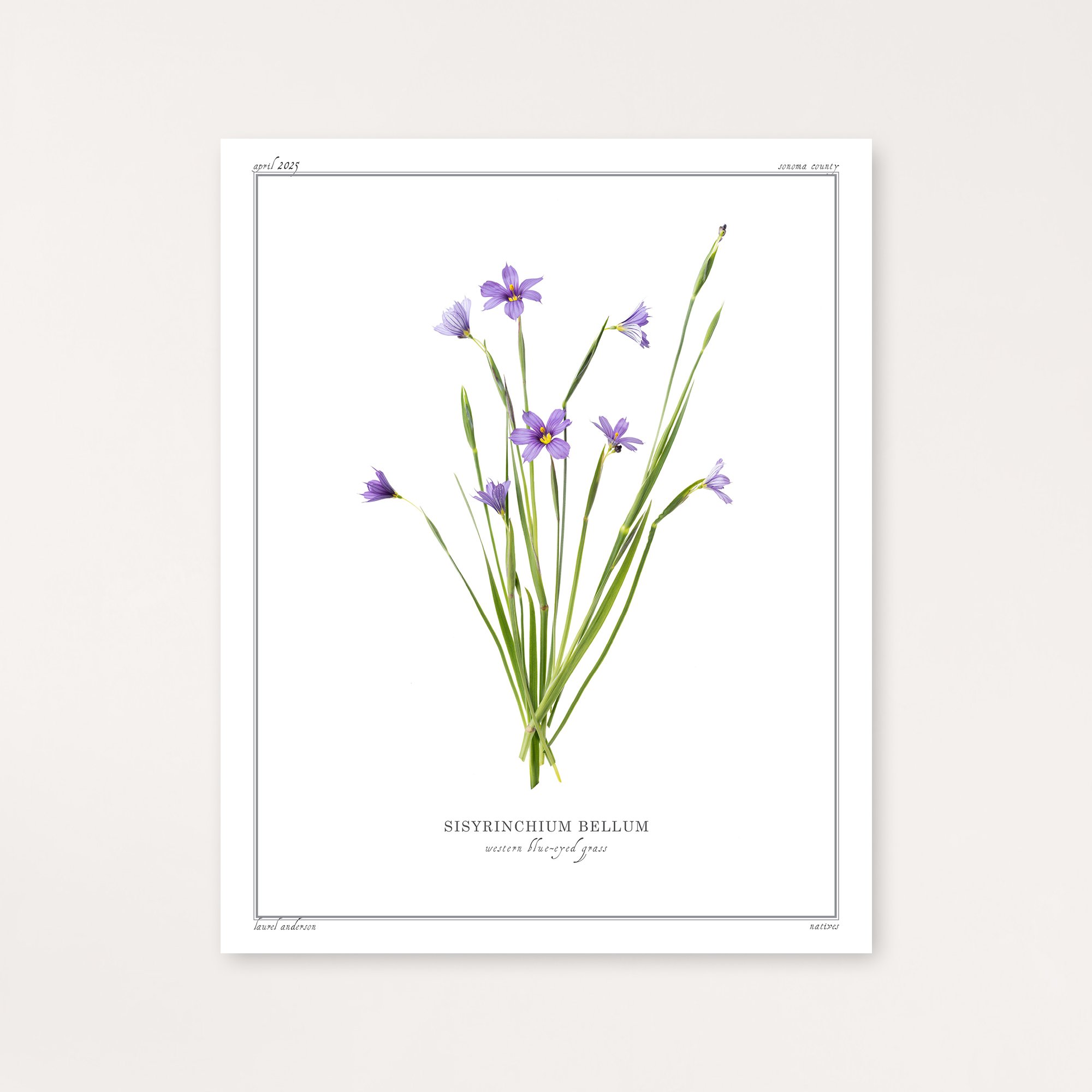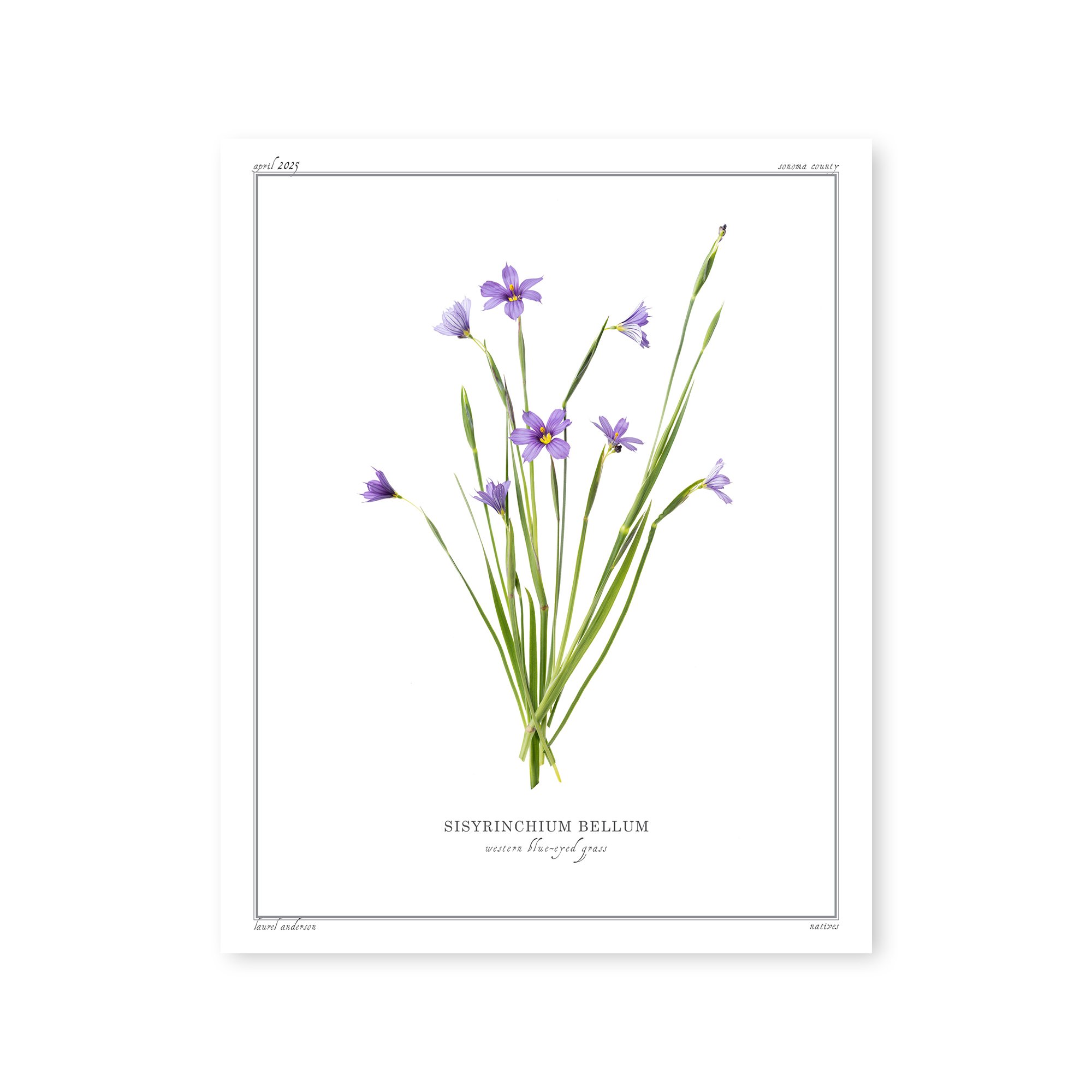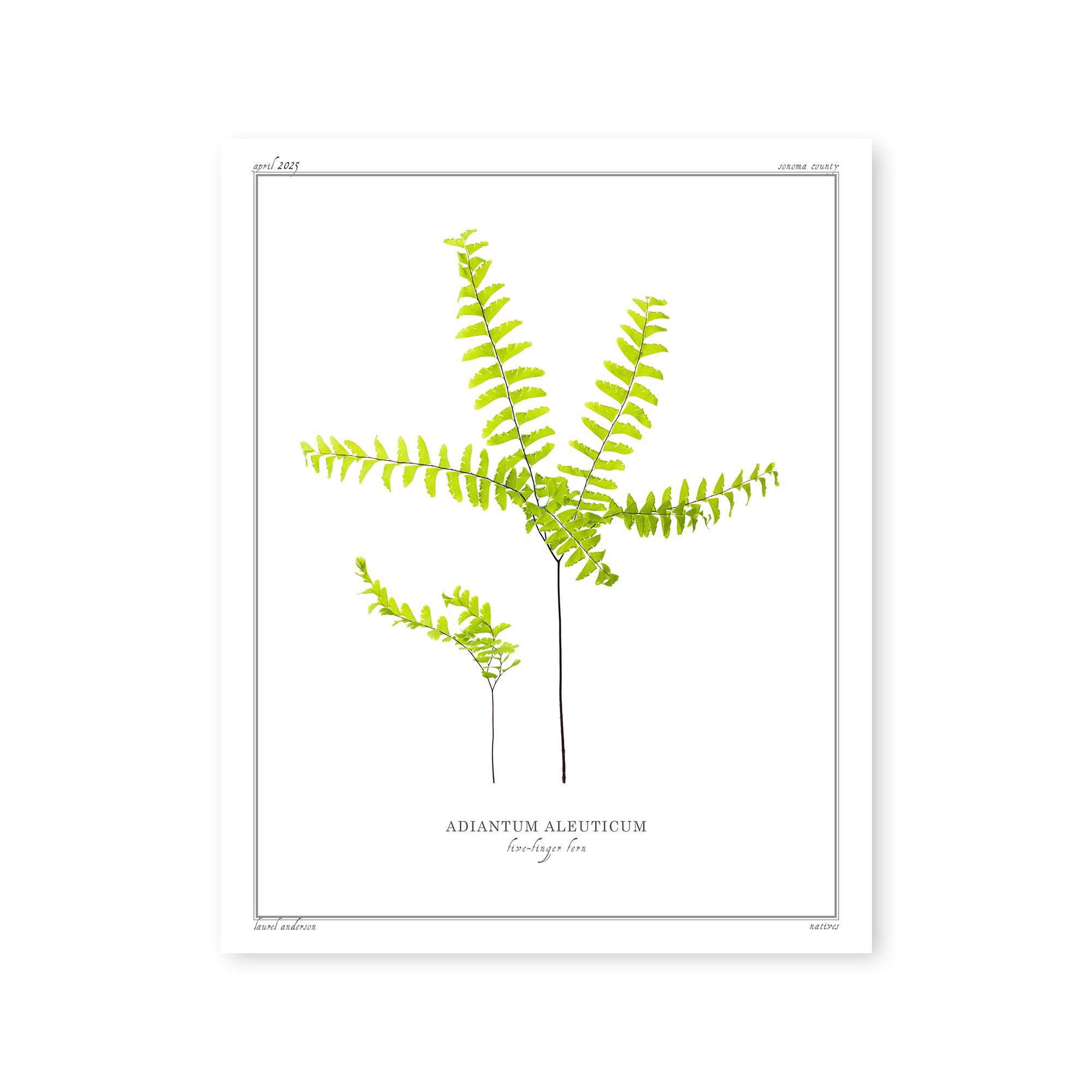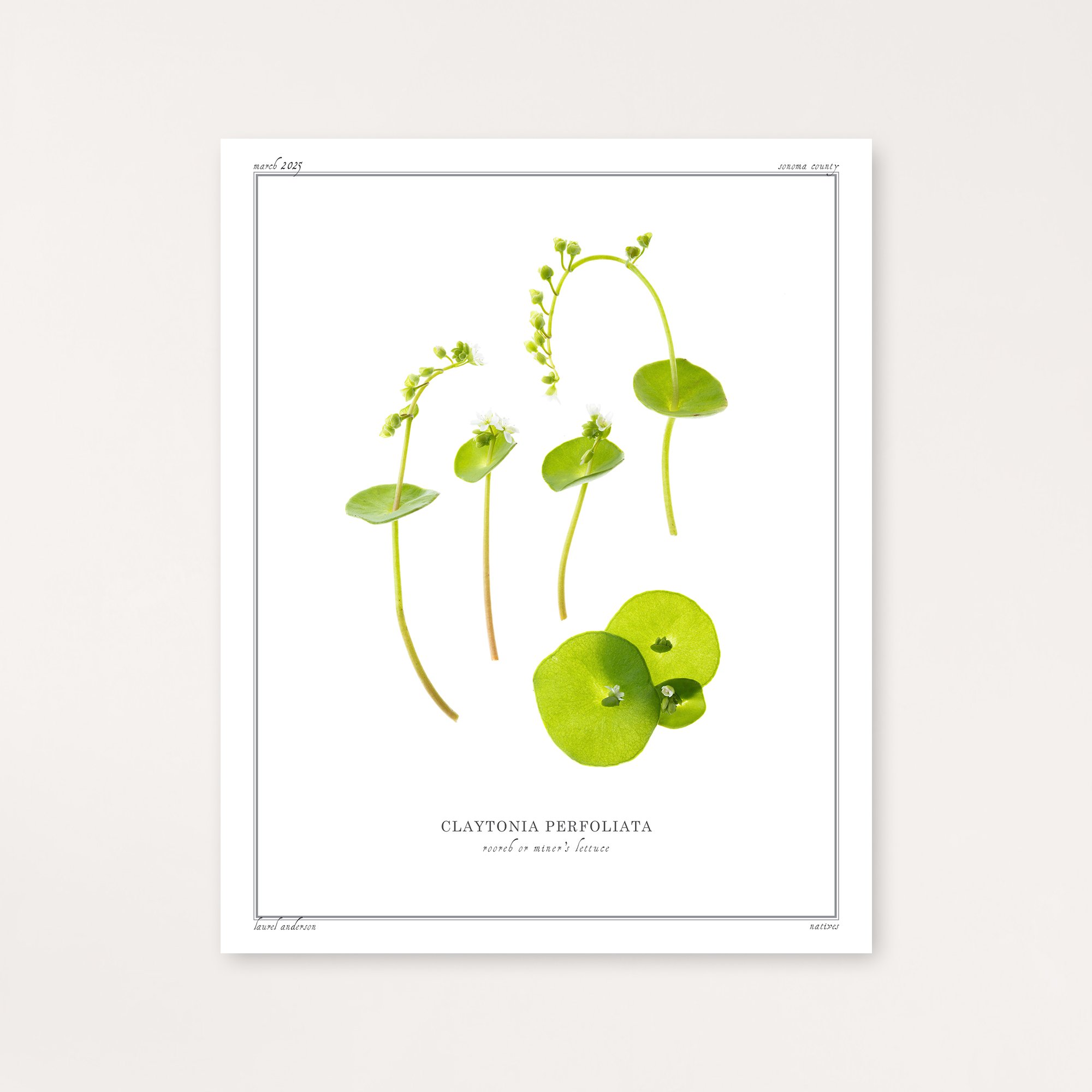 Image 1 of 2
Image 1 of 2

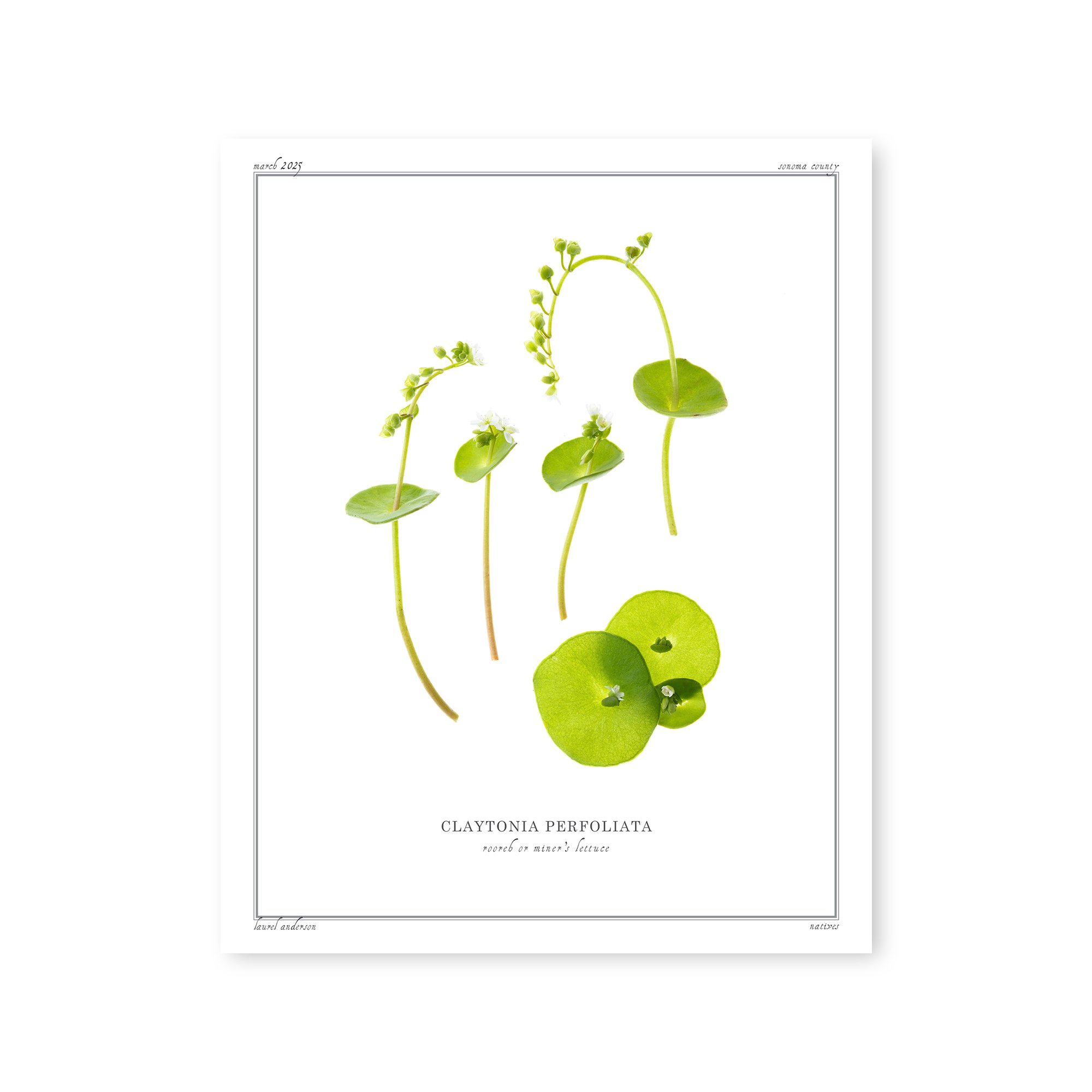 Image 2 of 2
Image 2 of 2



Rooreh
Rooreh, Claytonia perfoliata, also known as Miner’s Lettuce, is a delicate annual herb native to western North America. This adaptable plant has distinctive circular leaves that surround the stem, appearing as if the stem grows through the leaf.
This plant is a forager’s delight, offering delicious, nutritious greens. The Costanoan used the raw foliage in early spring and boiled or steamed it later in the season. The Kawaiisu, Mendocino, and Diegueno peoples also incorporated it into their diets. During the California Gold Rush, miners learned to eat this vitamin C-rich plant from indigenous peoples, using it to prevent scurvy—hence its common name.
Each print is made by the artist using archival quality pigment ink on Moab's Entrada Rag Bright 300 paper.
Rooreh, Claytonia perfoliata, also known as Miner’s Lettuce, is a delicate annual herb native to western North America. This adaptable plant has distinctive circular leaves that surround the stem, appearing as if the stem grows through the leaf.
This plant is a forager’s delight, offering delicious, nutritious greens. The Costanoan used the raw foliage in early spring and boiled or steamed it later in the season. The Kawaiisu, Mendocino, and Diegueno peoples also incorporated it into their diets. During the California Gold Rush, miners learned to eat this vitamin C-rich plant from indigenous peoples, using it to prevent scurvy—hence its common name.
Each print is made by the artist using archival quality pigment ink on Moab's Entrada Rag Bright 300 paper.



